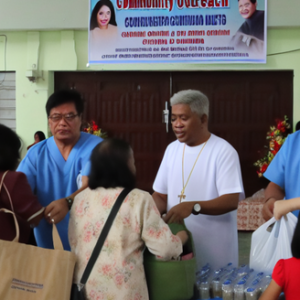Exploring the Role of Faith-Based Institutions in Community Cohesion
Faith-based institutions, be they churches, temples, synagogues, or mosques, have a vital role in fostering cohesive communities, despite their structural and functional differences. Their nurturing of shared symbolic systems, values, and norms serves as a unifying force, encouraging community members to cooperate and engage in dialogue towards mutual goals and understanding. Transcending societal boundaries, these institutions create an environment of trust, thereby bridging socio-economic divisions and enhancing communication amidst diversity. They cultivate a community identity through shared spiritual and cultural practices, stimulate effective communication, and strengthen community ties globally. Therefore, they are more than just places of worship; they are key catalysts for community integration.
Concrete Examples of Faith-Based Institutions Promoting Cohesion
Places of worship such as churches, mosques, temples, and synagogues have been much more than venues for rituals and prayer for centuries. Apart from serving as spiritual sanctuaries and social hubs, they provide an open ground for like-minded individuals to engage in collective worship or casual gatherings, deeply enriching the community’s cultural fabric. They also function as community centers where service projects like feeding the homeless and helping those recovering from disasters are organized, effectively impacting the community’s wellness.
These sacred spaces also present community meals, offering a platform for people from different backgrounds to share meals prepared by volunteers. These activities nurture mutual respect, understanding, and equality while allowing sharing of traditions and ideas, bridging divides of class, culture, and ethnicity. Faith-based institutions also run education programs tailored to different age groups, amplifying moral teachings like kindness, tolerance, and integrity.
In servicing these various facets, faith-based institutions become more than just places of worship, actively contributing to building a unified society. Their continuous efforts towards community welfare serve as ideal examples of how faith can be a powerful tool for social coherence and communal harmony.
The Psychological Impact of Community Cohesion on Individuals
The importance of a cohesive community lies in the significant psychological benefits provided to its members, including a profound sense of belonging and identity that strengthens individuals’ self-image. These benefits also extend to cultivating a sense of purpose, energizing and motivating individuals, connecting them with their community, and fostering dedication and commitment to shared goals and objectives. Apart from these, a cohesive community enhances personal security as the collective protection and shared responsibilities within the group spur a greater perception of safety. Living in such a community promotes overall mental well-being, enhanced through positive relationships and social interactions that contribute to an individual’s happiness, fulfillment, and emotional stability. Reducing stress and anxiety are other incredible gains from community cohesion, as it reduces feelings of isolation and maintains emotional balance, all while fostering resilience against daily life challenges. This increased resilience, coupled with the support and understanding from community members, enables individuals to manage and overcome adversities, thereby creating a potent, resilient, and emotionally supportive environment promoting personal growth and wellbeing.
Challenges and Opportunities in Facilitating Community Cohesion
Cultivating and facilitating community cohesion presents challenges which need to be delicately maneuvered; such factors include pervasive cultural differences, societal inequality, or varying degree of religious observance among community members. These challenges occur due to societal diversity, and while they create potential obstacles to community harmony, they also present unique opportunities for growth, transformation, and community-building. Each challenge, when constructively confronted, can foster understanding, respect, and could even encourage new perspectives that enhance community ethos, thus paving the way for stronger, more resilient, and integrated communities. Having fostered understanding and overcome differences, these communities become supportive, cooperative, and play significant roles in fostering peace in a diverse global society. Therefore, the challenges of community cohesion unlock the potential for a future of integration, cooperation, and mutual respect. These resilient and integrated communities thereby promote that harmony, even in diversity, is not only possible but beneficial and rewarding for all involved.
Sustainable Strategies for Community Cohesion: A Look Ahead
Investing in youth development is key to fostering future community cohesion. By prioritizing education, we equip young people with the tools to contribute positively to the community. Inter-faith relationships are another vital strategy for cohesion, fostering respect and mutual understanding among different faith backgrounds. Embracing diversity, including diverse backgrounds and experiences, also strengthens a community.
Building on the shared bond of humanity paves the way to a harmonious future by emphasizing everyone’s belonging in the larger human family, regardless of race or social status. Our collective concern for our neighbors and the broader world forms the foundation for this unity.
Faith-based institutions can also create a more harmonious future, imparting moral values and bridging societal gaps. With a focus on respect, understanding, and appreciation, these institutions can serve as models for community cohesion. By adhering to these guidelines, communities can work towards a unified, integrated, and diverse future.


